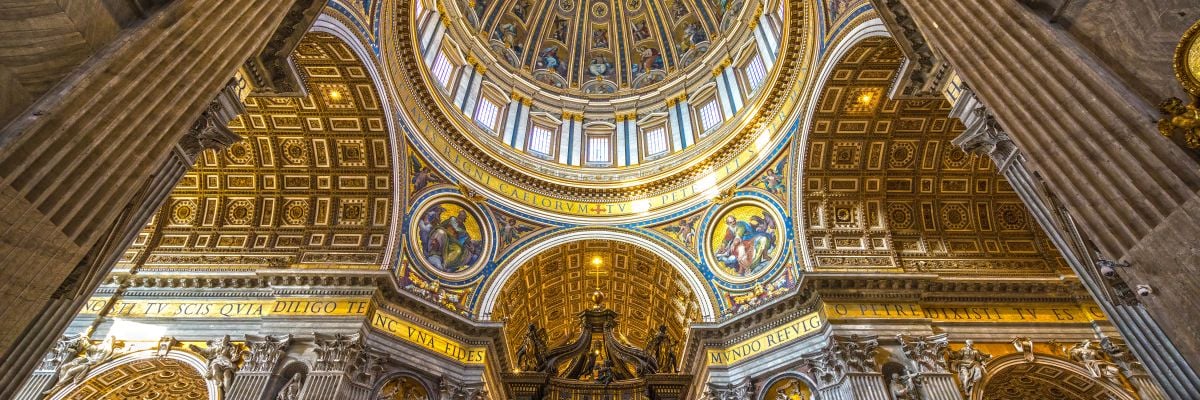
Question:
Answer:
Grand churches such as the Vatican are not for the benefit of the Church per se but rather for the people of God and to give glory and honor to God.
As Catholics we believe that faith involves the whole person, not just our words. Beautiful art and buildings are meant to inspire us and draw us visually and emotionally into the realm of faith. For example, my parish is a beautiful nineteenth-century church full of marble. When the people of my neighborhood come to Mass or to pray, they can escape the harsh realities of the outside for a little while and bask in the beauty of their parish, which reflects to them the beauty of God and faith.
Grand churches also reflect our values. If we claim that God is the center of our lives and the most important thing, shouldn’t our buildings dedicated to God reflect that? As human beings we naturally associate importance with how much effort we put into something. If we pay little attention to the house of God and prayer, what would that say about the importance we place upon those things?
How much money the Catholic Church has is often exaggerated by legend and anti-Catholicism. In 2010, the Vatican had an income of $326 million and ran a $13 million budget surplus, but in 2011 the Vatican ran a $19 million deficit. And while some of that money obviously went to maintaining church buildings and art, much of it also went to charitable causes.
Recent re-evaluations of Vatican assets show that the Vatican has approximately $1 billion in total assets. For comparison, Harvard University’s endowment is over $30 billion. So, relatively speaking, the Catholic Church is not really wealthy, and no one blames museums for maintaining their art work and structures.
Money that is amassed merely for the comfort and advantage of a few would obviously be immoral. That can and does happen sometimes; clergy are affected by original sin the same as everyone else, and the Church does its best to root it out when discovered.
The world spends billions on maintaining history, art, and beauty without an uproar over how else that money could be spent. People seem to have better perspective and practicality on secular matters, but the facts are the facts. The Church, compared to other institutions and organizations, is not all that wealthy and proportionally seems to do much more good with what it has.
Jesus doesn’t need money, precious metals, or beautiful art. Those are not really the things we’re giving to Jesus; we’re giving our love and talent and giving thanks for the blessings we have received. When Jesus returns, I don’t think he’ll see the materials and money—he’ll see the love and devotion that produced it. And, of course, in the places and times we did it for our own glory rather than his, he’ll see that too.



